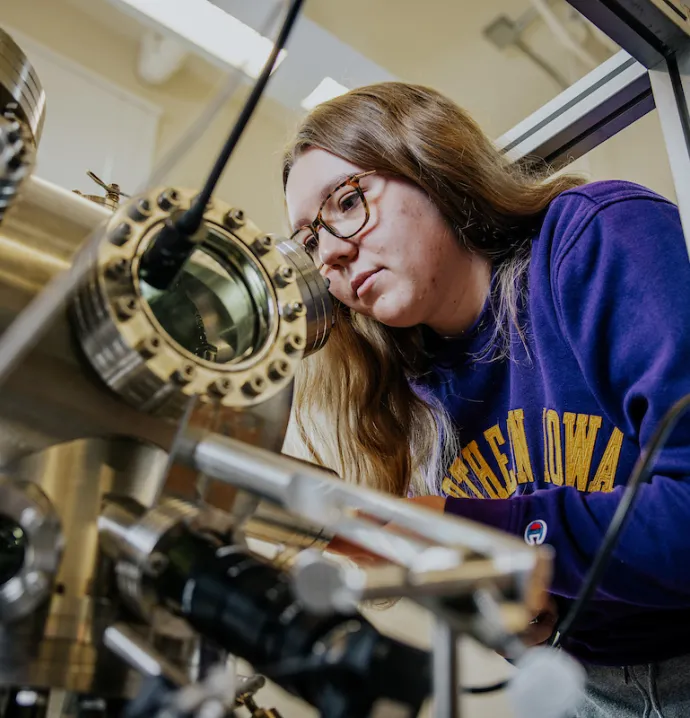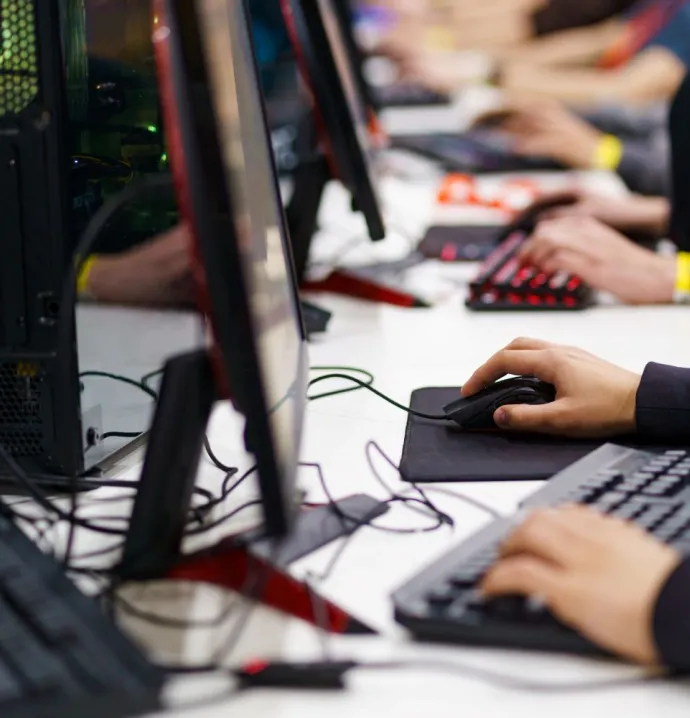Why did a rainbow cat GIF just sell for nearly $600,000? A UNI art professor explains
Why did a rainbow cat GIF just sell for nearly $600,000? A UNI art professor explains
Unique pieces of digital art known as NFTs (nonfungible tokens) have begun taking the art world by storm. A special anniversary version of the famous Nyan Cat gif recently sold for $560,000. And this week Christies became the first major auction house to sell an original NFT work of art. InsideUNI asked art history professor Elizabeth Sutton about this trend and what it says about our digital and real-world lives.
What issues do you see in the future with digital art vs more traditional pieces? And what is art ultimately?
I think each medium has its market audience. “Traditional” typically means the “plastic” arts of painting, printmaking, ceramics, drawing, sculpture, etc. But even before Nyan Cat, artists whose work was performance-based, or interactive (for example, Marina Abramovic, “The Artist is Present,” Christo and Jean Claude’s environmental interventions, etc.), could be commodified by documentation in photo, video, sketches, whatever. 
Life is art. Living is art. Most people, however, don’t look around with the perspective of making life meaningful, beautiful, interactive, dialogic, creative. But if they did, I guarantee we’d have a much higher Gross National Happiness.
In a recent book review, you wrote that you hoped art could escape market constraints. Is the recent sale of these digital artifacts a sign of the growth of our concept of art or a new investment market?
That’s more of a wish to democratize art and, philosophically speaking, to instill the love and social recognition of the essential necessity of creative expression for all people. Today, many in the U.S., for example, have been taught to believe art is a luxury. It isn’t. Capitalism deadens many people’s creative pursuits and outlets, and they forget their potential to grow and construct--themselves and the world they want-- through their own creativity and imaginations, in concert with others.
Yes, it’s also a new investment market (based on cryptocurrency blockchains), but really similar to the “traditional” art market. The audience here are those who are investing in the blockchain technology and cryptocurrency that legitimates or supports a kind of uniqueness.
You've written about what our use of animals like dogs in our art says about us. What does our obsession with pets in our digital life and memes say about us?
It says we’re dying for connection and are exhausted by the work it takes to be human and develop human connections in today’s world. The internet is exhausting because it is so expansive--it’s a 24/7, never-ceasing distraction-land. And yet it is a non-place. When you’re surfing, or on an app, or whatever, you’re not with anyone. You’re not grounded anywhere. It’s disorienting. And yet the apps are made to give us little bits of serotonin, to keep us scrolling, to keep us searching for that connection, that “like”, whatever.
On the other hand, nature, trees and animals, including pets, are real. A dog lives in the present. She doesn’t judge you. She always likes you. She doesn’t care about politics, or climate change, or even her own death, because she isn’t worried about the future, or hanging onto the past. The memes of cats, dogs, cuddly bears, even Bernie Sanders with his woolly mittens--these are all ways to re-establish the fundamental need to be with others and create. I think people find real joy looking at images and making something with them, and sharing them, talking about them, critiquing and/or marking a moment with a slightly changed (by them) image. You have to spend time with an image to change it. My book, “Art, Animals, and Experience,” is fundamentally about being with art, animals, and living--really being present--in every moment. A meme, ironically and paradoxically, reminds us of that potential. And yet...it isn’t real… (for more on memes’ potential to connect people toward a common goal, I direct readers to the excellent book by Xiao Mina, Memes to Movements, Penguin, 2019).
Neither, of course, is a painted mountain landscape providing the same experience as being in the mountains. But both kinds of art, I think, fulfill these human needs to contemplate nature, or laugh (everybody needs to laugh, it’s been a rough year!), to find connection with living things. I mean, who doesn’t love the idea of an always happy toaster-cat farting rainbows? Still, the difference for me between Nyan Cat and say, Rembrandt’s “Simeon and the Christ Child,” is that I probably won’t stay as long with this image to contemplate why I like farting rainbows (we need to lighten up, it says something about the heaviness of the time) as I might with something with more complex layers of history and meaning. But those layers might get built into Nyan Cat over time as more people see it, make meaning from it, talk, and write about it.
Part of what seems odd about buying a GIF is that it's easy to copy and it exists only virtually. But you hear that many wealthy collectors store original paintings and hang reproductions in their homes. What's your take on that aspect of this trend?
It seems like the point of the sale using cryptocurrency was to give the impression of uniqueness and ownership, similar to any “traditional” work. Collectors would hang reproductions, I suppose, to protect the work (sunlight, air, everything is constantly working to decay any physical material), although, in my view, why bother? Everything decays. Enjoy it for real, now! But I think an investor, with an investment mindset, probably is thinking towards market value and the future, rather than being with it in the now, and appreciating it as it is.
Modern art seemed incomprehensible to people seeing it for the first time. Digital art seems likely to do the same. Since memes come and go so quickly, is there a risk that popular pieces now will be even harder for future generations to understand?
Yes, the ubiquity of visual imagery may make it difficult for some to understand, but I think this is reflective of our moment in time. In neo-liberal capitalism everything is transient, nothing really has value, it just has a price. The next best thing is right there, making the former obsolete and worthless. If we separate commodification from our appreciation, your question is not a concern. It’s not to me, probably because almost anything made now could exemplify the existential reality of where we’re at as a species. Will some not understand? Of course, because they’re focused on money and price, both totally constructed things. That’s why there are articles and such that see this phenomenon (or Banksy’s shredding his own work at auction, etc.) as confusing.
I have student work, and my kids’ work, and my colleagues’ work on my walls at home. And I love a good meme and gif. But none of that is written about, or highly commodified through the legitimizing structures of gallery, museum, high-end collector, auction house, Ivy League MFA, and critics. But I love it anyway. I like looking at it and thinking about it as I look, every day. Just like I like going to museums and finding a piece that speaks to me, that I want to be with, and get to know better. It’s why I keep going back to the same museums. Or the same sit-spot in my backyard. We can see things differently, every time we look.
If we all just slowed down, we could do the same with almost any experience in our lives.




